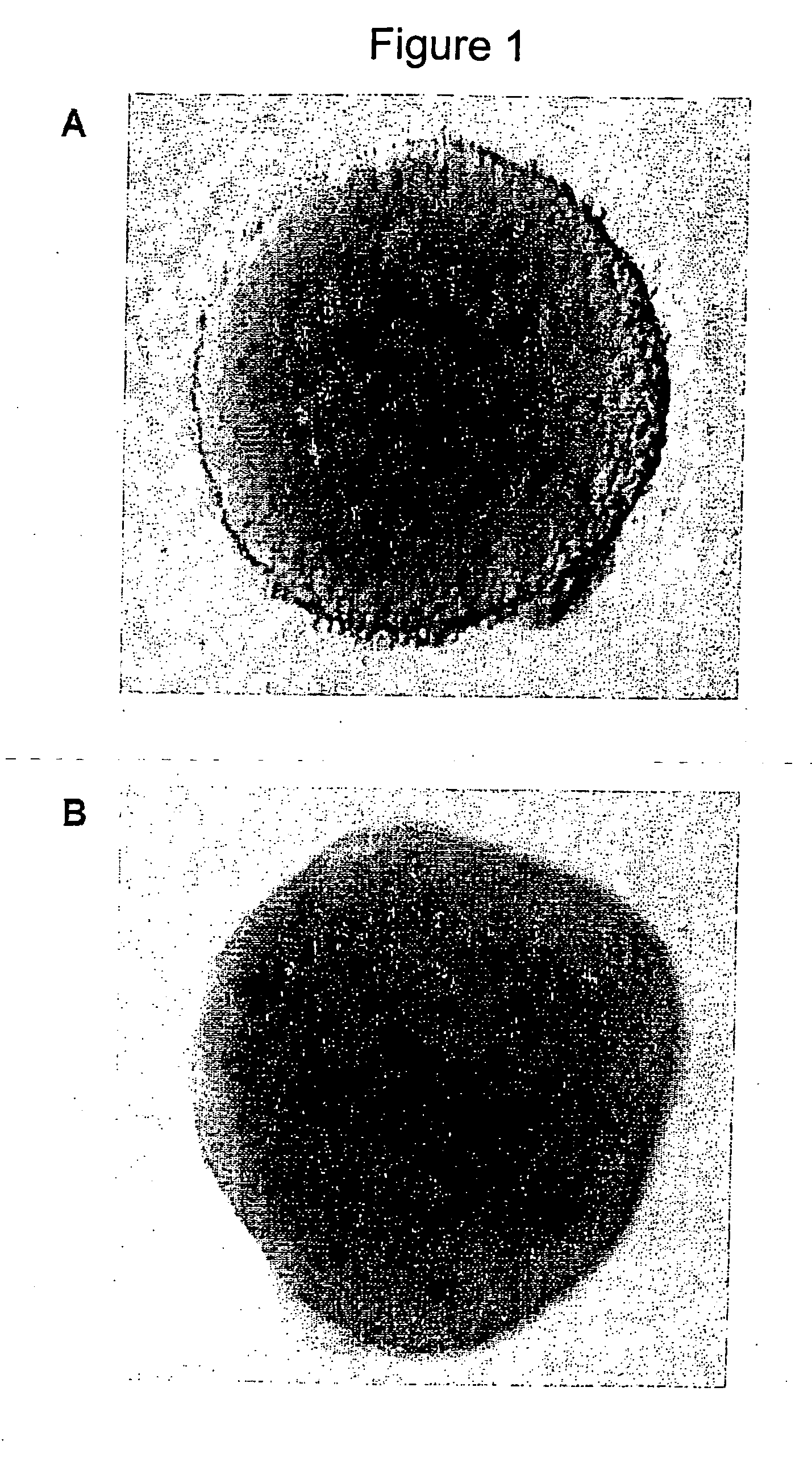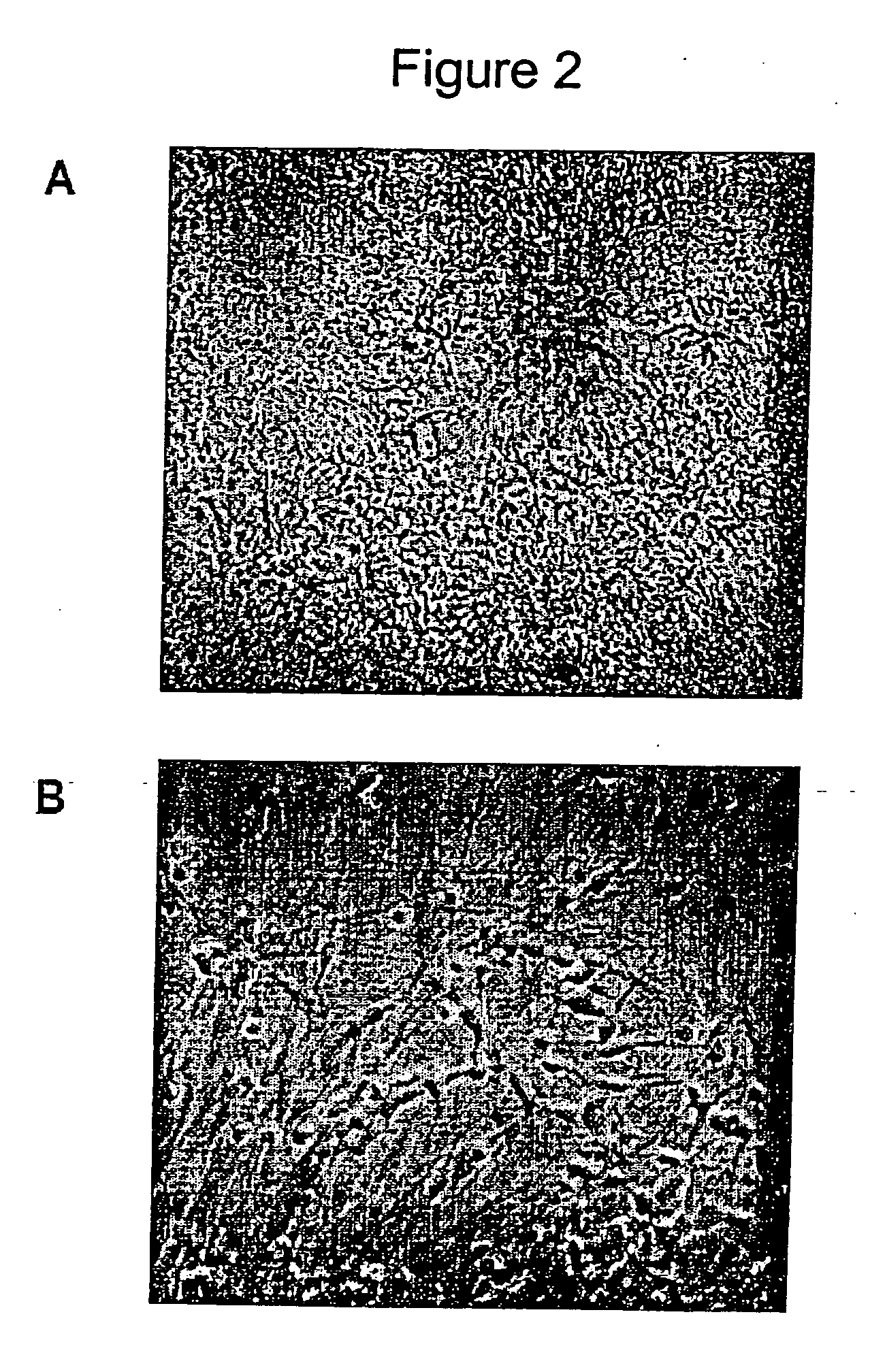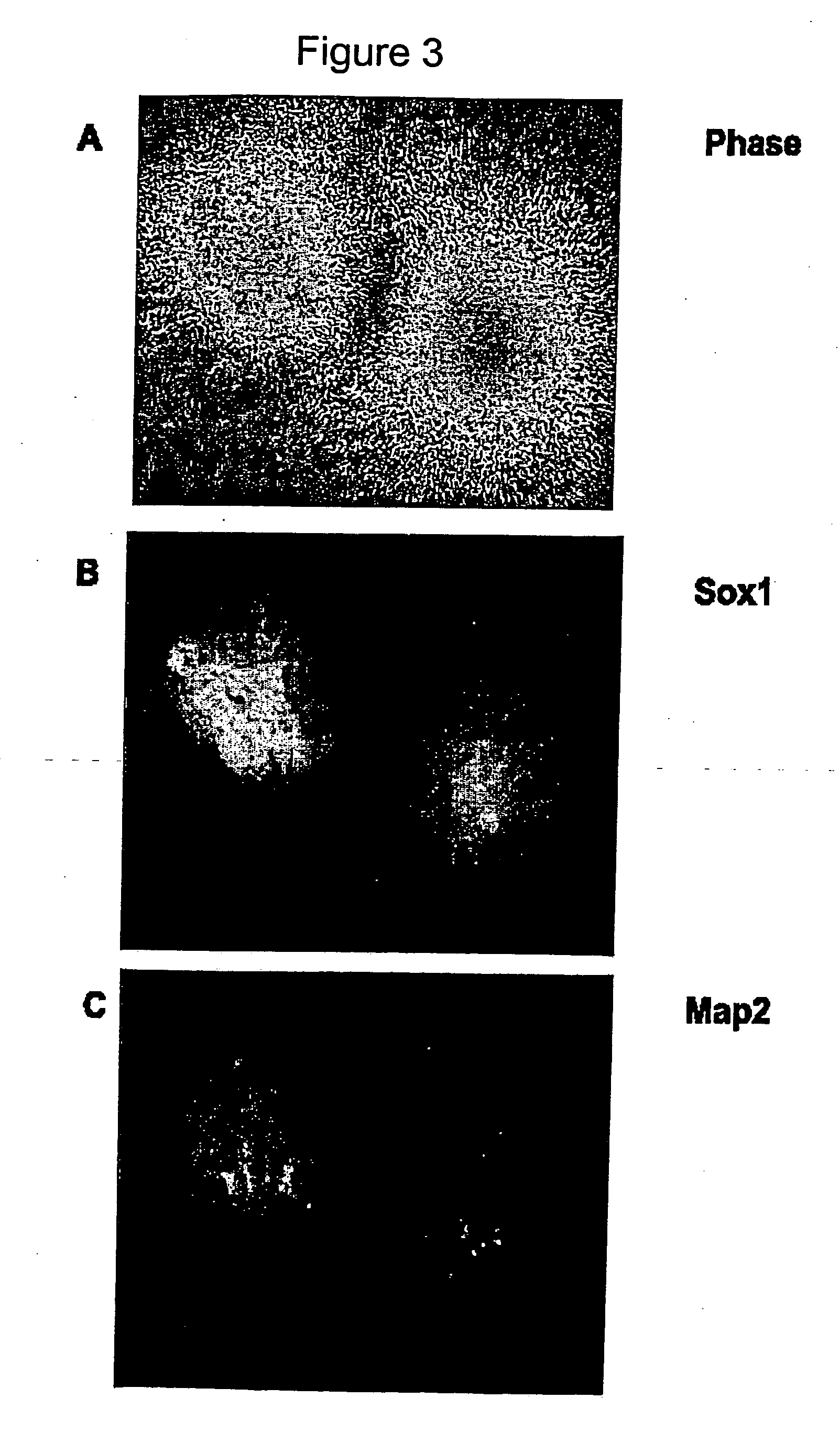Compositions and methods for neural differentiation of embryonic stem cells
a technology of embryonic stem cells and compositions, applied in the field of human neural cells, can solve the problems of difficult isolation, long-term clonal maintenance, genetic manipulation and germ-line transmission of pluripotent cells from species other than rodents, and inability to tightly control differentiation or form homogeneous populations of partially differentiated or terminally differentiated cells by pluripotent cell differentiation in vitro, and the ability to effectively control differentiation or form homogeneous populations of partially differentiated or
- Summary
- Abstract
- Description
- Claims
- Application Information
AI Technical Summary
Benefits of technology
Problems solved by technology
Method used
Image
Examples
example 1
Production of Essentially Serum Free MEDII Conditioned Media
[0090] An essentially serum free MEDII conditioned medium was produced as follows. Hep G2 cells (Knowles et al., 1980 Nature 288:615-618; ATCC HB-8065) were seeded at a density of 5×104 cells / cm2 and cultured for three days in DMEM. Cells were washed twice with 1×PBS and once with serum free medium (DMEM containing high glucose but without phenol red, supplemented with 1 mM L-glutamine, 0.1 mM β-ME, 1×ITSS supplement (Boehringer Mannheim), 10 mM HEPES, pH 7.4 and 110 mg / L sodium pyruvate) for 2 hours. Fresh serum free medium was added at a ratio of 0.23 ml / cm2 and the cells were cultured for a further 3-4 days. SfMEDII was collected, sterilized and stored. A further explanation of MEDII conditioned media can be found in International Application No. WO 99 / 53021, herein incorporated by reference in its entirety.
example 2
Isolation of the Neural Inducing Component of MEDII Media
[0091] Essentially serum free MEDII (sfMEDII) or serum containing MEDII is used as a source of the biologically active factor in all purification protocols in this examples. The bioactive component of MEDII, referred to as the neural inducing factor, is routinely isolated from the sfMEDII or MEDII using purification techniques well known in the art. These techniques can include ultrafiltration; column chromatography, including ion exchange columns, hydrophobic columns, hydroxyapatite and gel-filtration columns; affinity chromatography; high performance liquid chromatography (HPLC); or FPLC. After each step of the purification protocol, individual samples are assayed directly for the biological activity of the neural inducing factor on ES cells. Reducing SDS PAGE can reveal the presence of a highly purified component in samples containing the neural inducing factor bioactivity.
[0092] The purified and isolated neural inducing...
example 3
Derivation and Characterization of a Neurosphere Population from Mouse Embryonic Stem Cells
Preparation of Embryoid Bodies from Mouse ES Cells
[0093] D3 mouse embryonic stem cells were maintained on gelatin free tissue culture plates and passaged every three to four days. The mouse ES cell culture medium was 10% fetal bovine serum (FBS), Dulbecco's Modified Eagles Medium (DMEM), 0.1M β-mercaptoethanol (β-ME), 1 mM glutamine, 1000 U / ml mouse LIF (ESGRO). The ES cell colonies were rinsed twice with PBS and treated with Trypsin / EDTA for one minute, they were then triturated and blocked with an equal volume of FBS, and then centrifuged, resuspended and counted.
[0094] Embryoid bodies were formed by seeding the ES single cell suspension at 1×105 cells / ml in IC:DMEM media (10% FBS, 90% DMEM, 1 mM Glutamine, and 0.1% β-ME). Embryoid bodies were allowed to aggregate for two days, and were then split 1:2 in IC:DMEM media (EB2), cultured for a further 2 days and split again 1:2 (EB4) and th...
PUM
 Login to View More
Login to View More Abstract
Description
Claims
Application Information
 Login to View More
Login to View More - R&D
- Intellectual Property
- Life Sciences
- Materials
- Tech Scout
- Unparalleled Data Quality
- Higher Quality Content
- 60% Fewer Hallucinations
Browse by: Latest US Patents, China's latest patents, Technical Efficacy Thesaurus, Application Domain, Technology Topic, Popular Technical Reports.
© 2025 PatSnap. All rights reserved.Legal|Privacy policy|Modern Slavery Act Transparency Statement|Sitemap|About US| Contact US: help@patsnap.com



